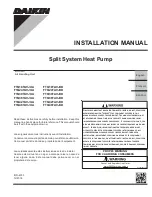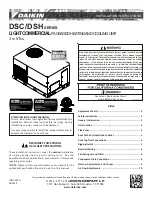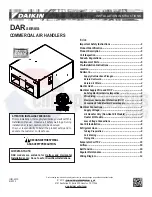
EN
UAB KOMFOVENT we reserve the right to make changes without prior notice
MOU_22-10
16
6. AIR EVACUATION
Safety Precautions
•
Use a vacuum pump with a gauge reading lower than -0.1MPa and an air discharge capacity above
40L/min.
•
The outdoor unit does not need vacuuming. DO NOT open the outdoor unit’s gas and liquid stop
valves.
•
Ensure that the Compound Meter reads -0.1MPa or below after 2 hours. If after three hours of opera-
tion and the gauge reading is still above -0.1MPa, check if there is a gas leak or water inside the pipe.
If there is no leakage, perform another evacuation for 1 or 2 hours.
•
DO NOT use refrigerant gas to evacuate the system.
6.1. Evacuation Instructions
Before using manifold gauge and vacuum pump, read their operation manuals to familiarize your-
self with how to use them properly.
Manifold Gauge
Compound gauge
-76cmHg
Low pressure valve
Charge hose
Low pressure valve
Vacuum pump
Charge hose
High pressure valve
Pressure gauge
Fig. 6.1
1. Connect the charge hose of the manifold gauge to service port on the outdoor unit’s low pressure
valve.
2. Connect another charge hose from the manifold gauge to the vacuum pump.
3. Open the Low Pressure side of the manifold gauge. Keep the High Pressure side closed.
4. Turn on the vacuum pump to evacuate the system.
5. Run the vacuum for at least 15 minutes, or until the Compound Meter reads -76cmHG (-1x105Pa).
6. Close the Low Pressure side of the manifold gauge, and turn off the vacuum pump.
7. Wait for 5 minutes, then check that there has been no change in system pressure.
NOTE: If there is no change in system pressure, unscrew the cap from the packed valve (high pressure valve). If there is a
change in system pressure, there may be a gas leak.
8. Insert hexagonal wrench into the packed valve (high pressure valve) and open the valve by turning
the wrench in a 1/4 counterclockwise turn. Listen for gas to exit the system, then close the valve after
5 seconds.
Содержание MOU Series
Страница 1: ...INSTALLATION MANUAL EN MOU ...
















































